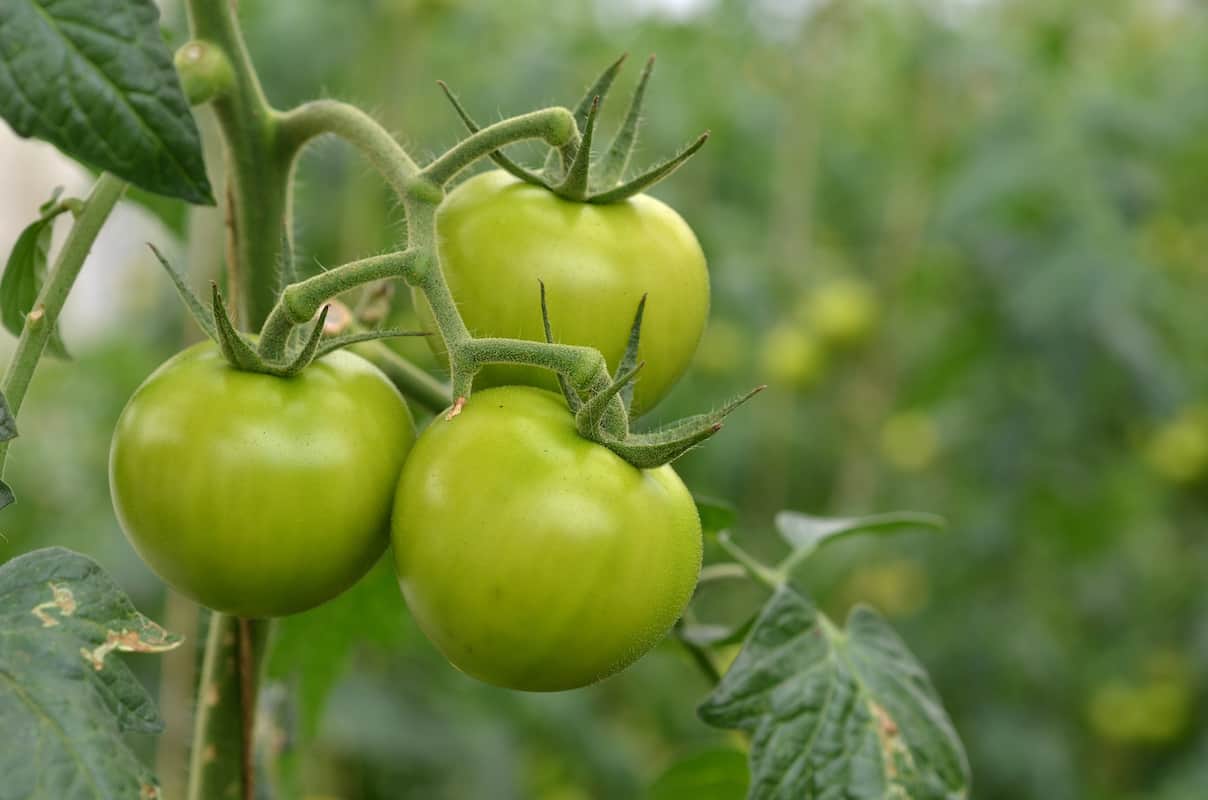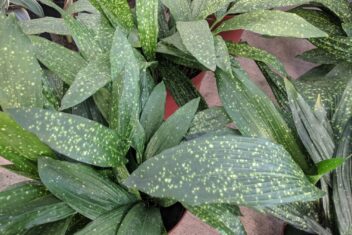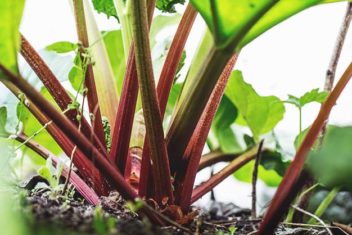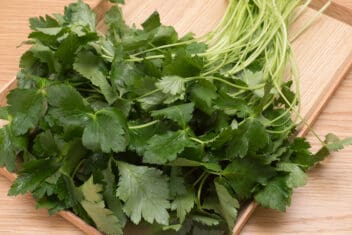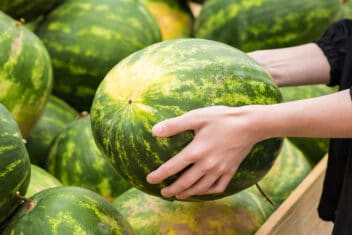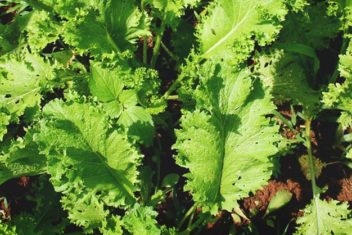Nothing is more frustrating than tomato plants bursting with green fruits that refuse to turn red. This problem is more common than you might think, and there are several reasons why your tomatoes aren’t ripening
When you’re tomatoes aren’t ripening, it’s not usually your fault. Many times, the problems are out of your control. That’s good and bad. It means that there is a good chance you didn’t do anything wrong, but it also means fixing the problem can be hard.
Let’s look at the reasons why your tomatoes aren’t ripening and what to do.
Why Do Tomatoes Ripen At All?
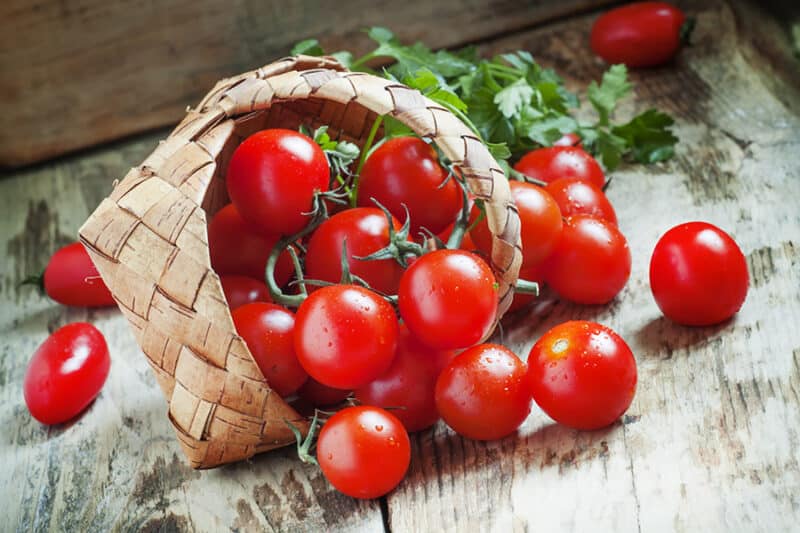
Before we dive too far into the reasons why your tomatoes aren’t ripening, you should understand why tomatoes mature and turn red. The science behind these little fruits is actually quite fascinating and complex, but we’re going to keep it as simple as possible.
Now, we say red, but not all tomatoes turn red. Tomatoes come in a range of colors, so you do need to know what color your tomatoes will look like once ripened. Some are purple, black, orange, yellow, green, or even striped.
Tomatoes start off as green because they contain chlorophyll. As they start to ripen, they create a naturally-occurring hormone called ethylene which starts the ripening process. Ethylene is responsible for triggering the fruit to turn its mature color and to soften.
Inside of tomatoes, a chemical called lycopene develops naturally, causing them to ripen and change colors. Lycopene can be found in tomatoes, apricots, watermelons, and a range of other fruits and veggies.
These two chemicals work together and – voila – you have red (or orange, pink, etc) tomatoes.
6 Reasons Why Your Tomatoes Aren’t Ripening
When all of your tomatoes are sitting on your vines, green when they should be red, you want to scream. While you shouldn’t take it personally, the green fruits on the vine seem to be taunting you.
Before you get too angry, take some time to investigate and determine if any of these factors could be affecting your tomato plants.
1. The Temperatures Are Too Warm
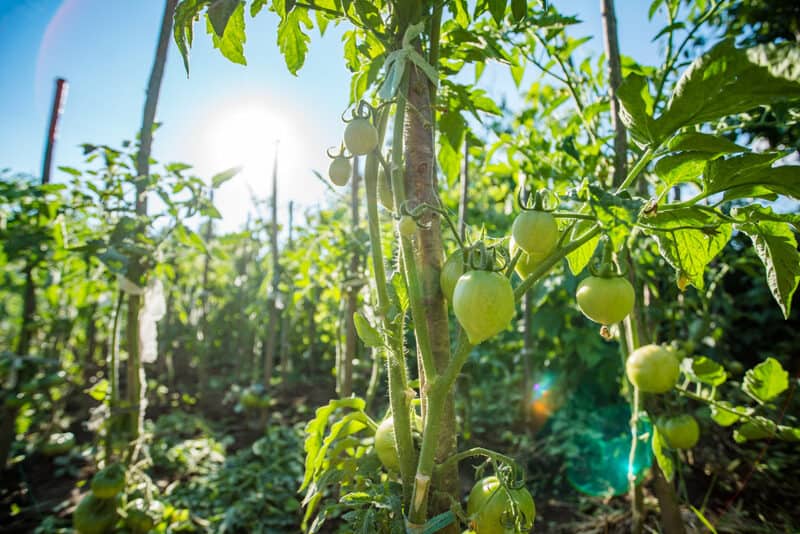
Warm temperatures and summer go hand in hand, but the heat can be the cause of the green tomatoes.
It can be hard to believe that high temperatures can be problematic for tomato plants because everyone grows them during the summer months. Tomatoes are a warm-season crop, right?
Tomatoes are temperature sensitive; it determines when the pigment inside of the fruit ripens and turns into the color you’re waiting to see.
Believe it or not, the ideal temperature range for color changing and ripening is 68-77°F. If the temps go a little higher than that, your tomatoes should still do fine. Once they reach 85-90°F, expect the ripening to dramatically slow down or stop entirely.
The bad news is that you cannot control how hot it is in your area… if only! So, all you can do is wait for temps to go down and prepare for the tsunami of ripening tomatoes.
The good news is that you should have enough time left in the season for a cool down. You just have to be patient.
2. The Temperatures Are Too Cool
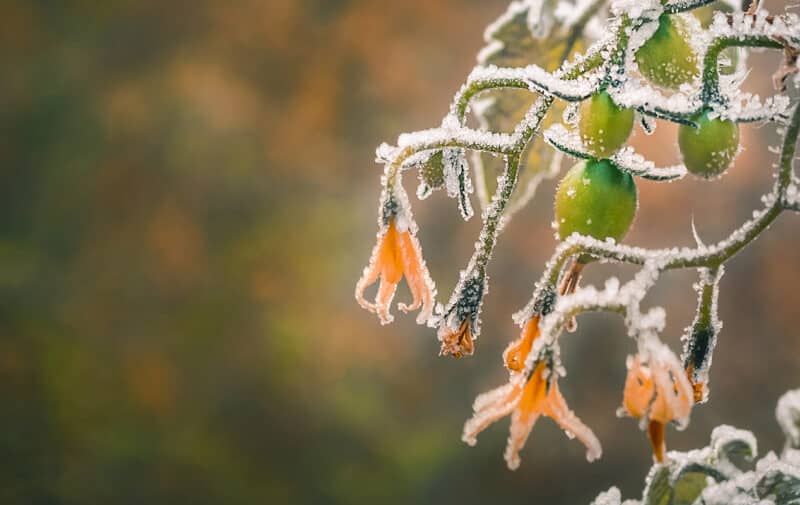
Temperatures that are too high can bother your tomato plants, but low temperatures can be bothersome as well.
You’re looking for the ideal temperature range between 68-77°F to help your tomatoes ripen to their desired end color. While they can handle temps slightly below that, understand that when the temperatures go to 60°F or lower, you’ll need to add 1-3 weeks onto their average maturity time.
What happens if the temperatures stay low or get even lower?
If the daytime temps for your area are under 60°F with nighttime temps going below 50°F, you can expect the ripening process to stop completely. Your tomatoes will not turn the color you desire unless it warms up again.
Not only will ripening stop, but the plants won’t set new fruit in those temperatures.
So, that leaves the question of if there is anything can you do anything to help your tomato plants when the temperatures get too chilly?
The best thing that you can do is protect your plants with either a row cover, an old bedsheet, or a tarp. Your goal is to try to trap in as much heat as possible to help the fruit ripen.
3. You Picked a Variety That Doesn’t Work for Your Area

What happens if you have tons of green tomatoes on the vine but the first frost dates are getting closer?
It means you might have selected a tomato variety that won’t do well in your region. If you live in a region that has a short growing season, you’ll need to select varieties of tomatoes that have a short growing season.
That means you want to pick tomatoes that can ripen in 50-70 days after transplanting. A good example is ‘Early Girl’ which can produce red, ripe tomatoes just 50 days.
Unfortunately, if you planted tomatoes that are unable to ripen within the frame of your growing season, there isn’t much that you can do. You can try to use season extenders, like a hoop house or floating row covers, to keep your plants as warm as possible. Those will only do so much, though! Live and learn.
4. Overgrown or Stressed Vines
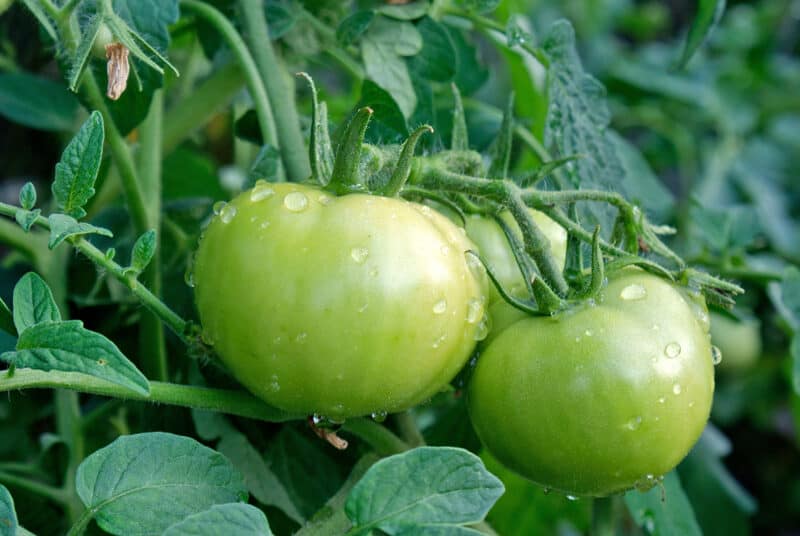
Like anything else in the world, tomato plants only have so much energy to give. If they spend more time growing leaves or flowers, it doesn’t leave much to help the fruit turn red.
To ensure your plants aren’t under too much stress due to overgrowth, be sure to prune. Cut back the vines to stop the plant from blossoming further and to improve the airflow around the plants. This can stop fruits from being infected by diseases.
You should also be sure not to give plants too much nitrogen fertilizer. Nitrogen encourages plants to focus on their foliage and not their fruits.
5. Blossom End Rot
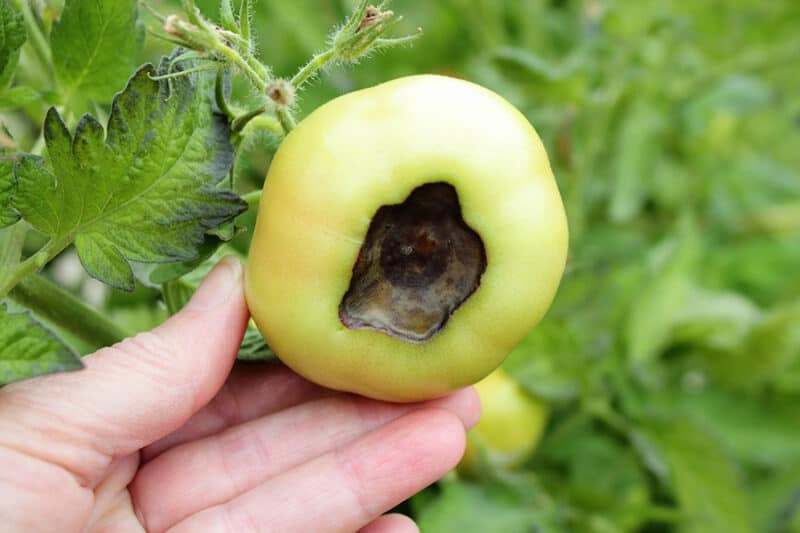
At times, if your plant develops blossom end rot, it could cause them to stop ripening due to the stress.
It’s easy to identify and determine if blossom end rot is your problem. You’ll find black lesions on your fruits, typically at the bottom of the fruit.
Blossom end rot is a disorder caused by low amounts of calcium in the plants. You can add more calcium to the soil, but that’s not usually the problem. The most typical reason for having a calcium deficiency is inconsistent watering, so the plant can’t take up the calcium.
6. Lack of Proper Sunlight
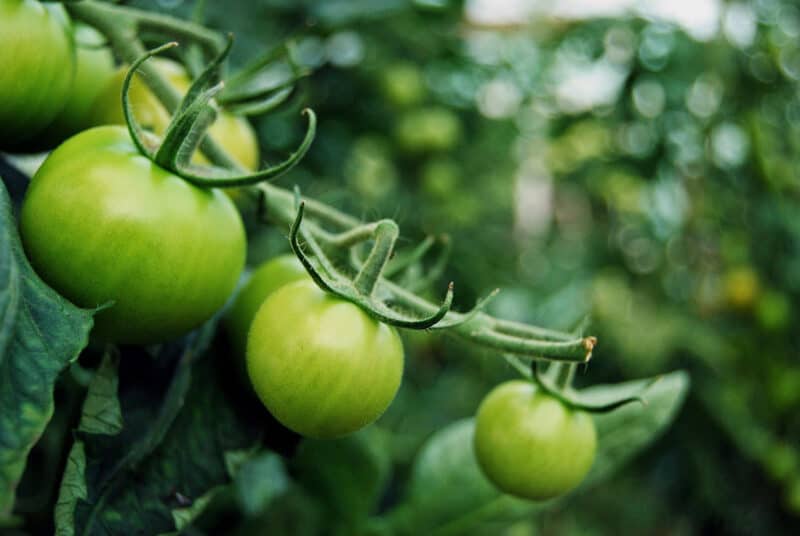
Another problem that could stop or hinder your tomatoes from ripening is the lack of proper sunlight. You might have picked a bad location for the plants without realizing it!
Tomatoes love the sunlight, and the plants need at least 7 hours of sunlight per day, but they’re happy with more.
You can make a mistake as I did. When I planted my tomato plants, the large tree on my property wasn’t fully leafed out. I didn’t realize that at its peak it would cast a huge about of shade over my garden right in the afternoon.
Another possibility is that you picked a great location, but put the plants too close together. Most tomato plants need at least 2 feet of distance, but larger plants could need even more.
You Can Eat Green Tomatoes!
If all else fails, you can eat green tomatoes. That might not have been your plan, but they can be delicious! You should process green tomatoes before eating because there is some question of whether or not they’re hard to digest or even mildly poisonous.
They can be cooked, fried, pickled, or used in a variety of other ways.

Remember, if you aren’t having problems with your fruits ripening, but you want them to hurry up already, there are several methods you can do to hasten the process along.
It can be frustrating, but you should try to find out the reason why your tomatoes aren’t ripening. Sometimes, you can find a simple solution, but other times, gardeners have to accept defeat. We cannot control all of the factors.
